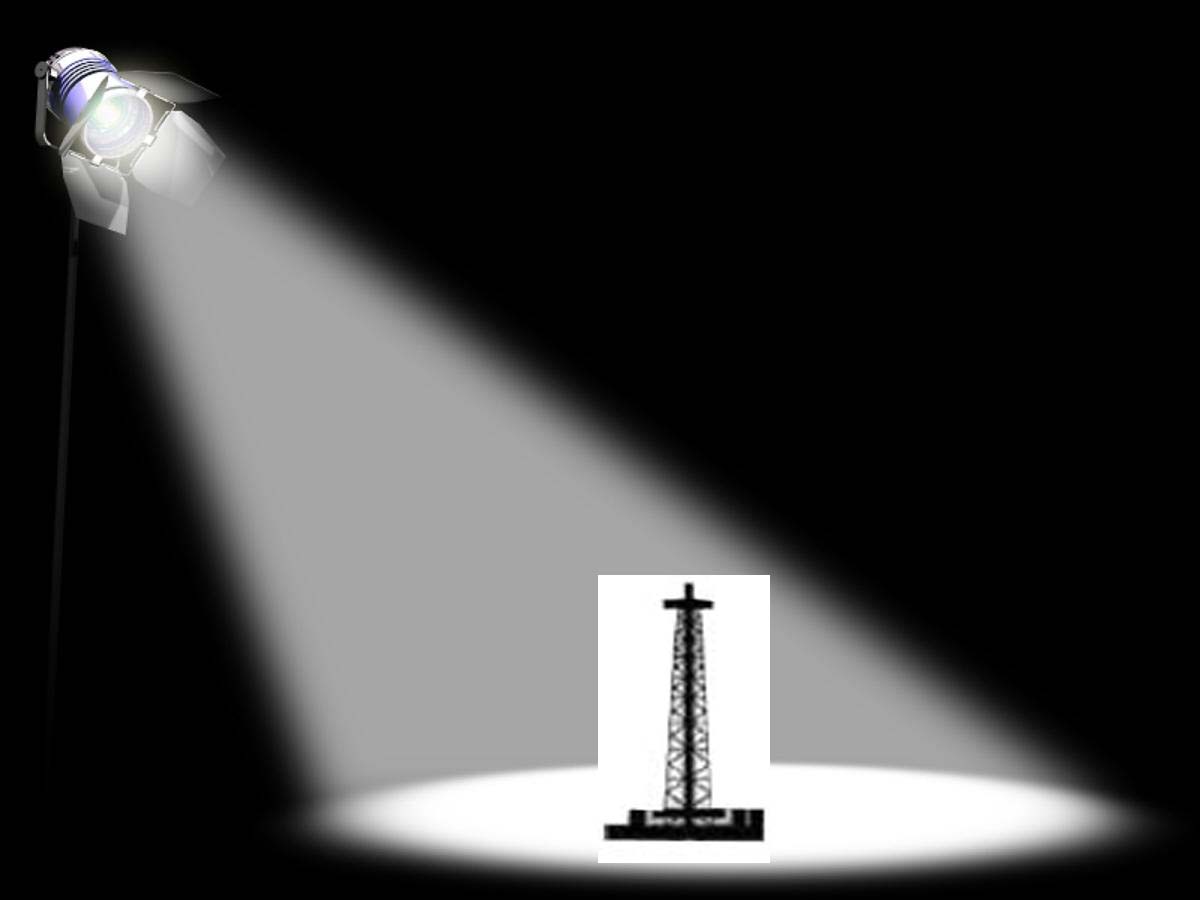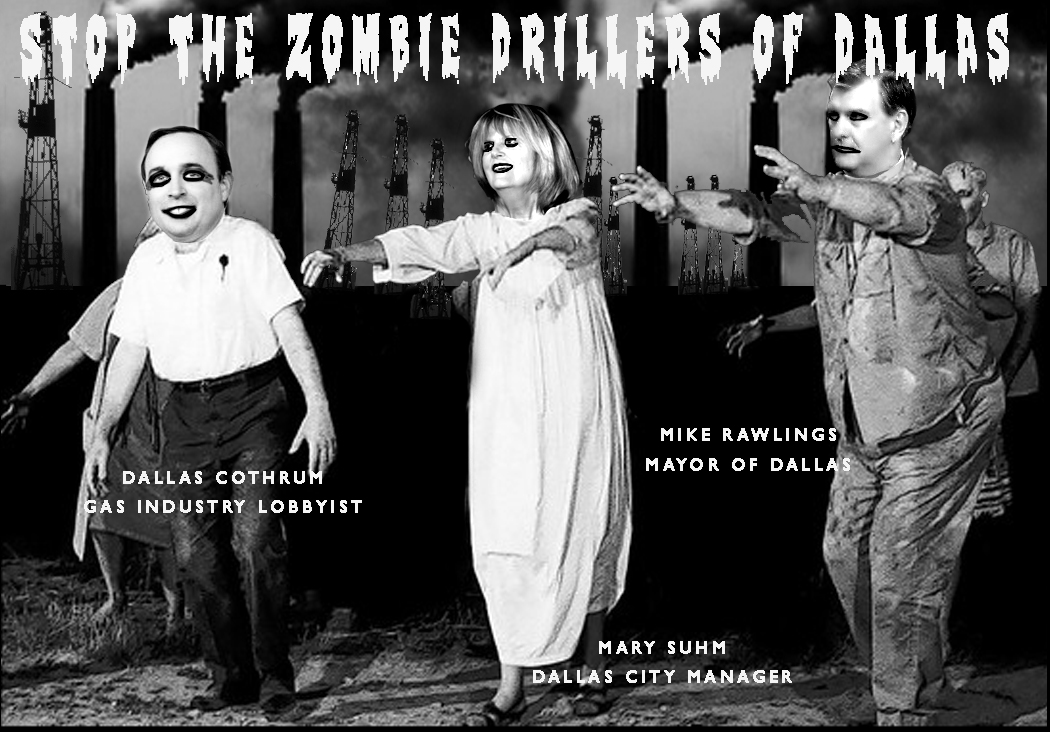Climate Change
Nation’s First Commercial-Sized Carbon Capture Plant Uses San Antonio Cement Kiln For Source
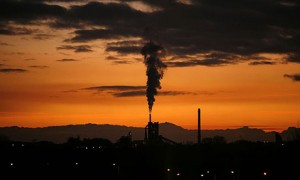 On the same day President Obama was making news in launching his climate change initiatives aimed at power plants, a company called Skyonic was announcing it had obtained financing to build America's first full-size carbon capture facility adjacent to the Capital Aggregates cement plant in San Antonio.
On the same day President Obama was making news in launching his climate change initiatives aimed at power plants, a company called Skyonic was announcing it had obtained financing to build America's first full-size carbon capture facility adjacent to the Capital Aggregates cement plant in San Antonio.
If all goes as planned the technology will be retrofitted to the kiln and capture carbon dioxide, acid gases, and heavy metals from the kiln's pollution plume and turn them into products such as baking soda and hydrochloric acid.
The company recently raised over $120 million to complete the project. Investors include Canadian oil giant Cenovus Energy, ConocoPhillips, BP Ventures, Energy Technology Ventures, BlueCap Partners, Toyo-Thai Corporation Public Company Limited, Berg & Berg Enterprises, Northwater Capital Management, PVS Chemicals, and Zachry Corporation, owner of the kiln.
Skyonic had been operating two pilot projects in Texas, including one at the same kiln. but this new facility is a large upgrade, able to remove more than 300,000 tons of carbon dioxide annually. It hopes to make a profit in three years.
Cement plants are among the largest sources of greenhouse gases on the planet, and there are a variety of start-ups and established firms competing to find a low-CO2 way of making the product. Some are concentrating on changing the manufacturing process itself, and others, like Skyonics, are looking at end-of-pipe treatment or recovery.
It's a shame there's zero interest among local Midlothian cement plant operators to bring any of this new technology to North Texas. We have the largest concentration of cement manufacturing in the country, and so we're also likely to have the largest concentration of cement-generated greenhouse gas pollution in the country as well. There's also the fact that DFW is the largest urban area in the nation downwind of so many kilns, and any reductions in pollution among those kilns, especially in metals and acid gases, would be welcome.
Sloshing Back and Forth Between Coal and Gas
 Around 2003 or so, the Dallas Morning News editorial board convened a roundtable of air pollution stakeholders and more or less facilitated a discussion of what could be done to clean up DFW's dirty air. You see, the area still hadn't complied with the 1997 national smog standard and more and more official air quality monitors were in violation of it. Pretty much, just like now.
Around 2003 or so, the Dallas Morning News editorial board convened a roundtable of air pollution stakeholders and more or less facilitated a discussion of what could be done to clean up DFW's dirty air. You see, the area still hadn't complied with the 1997 national smog standard and more and more official air quality monitors were in violation of it. Pretty much, just like now.
There was a memorable moment when one of the "environmentalists" at the table noted that for decades the Texas utility industry had been primarily reliant on natural gas for its power source, then switched almost entirely to coal during the 70's and 80's, exactly when the nation's first national air quality standards were being written and enforced. "Part of the problem is that there doesn't seem to have been any planning for the consequences of the industry switching over from one source to the other just like that. It's like a frenzied mob group of stockbrokers running back and forth between bidders."
"That's the marketplace," huffed a utility industry representative. And indeed it still is. One frenzied run after another back and forth between the two largest sources of fossil fuel.
You know the scene in Pirates of the Caribbean, At World's End where the crew runs back and forth, from each side of the ship, until it eventually turns upside down? It's like that, only with money doing the running. And it never ends.
That DMN discussion was only a decade ago. What happened next shows how quickly those runs can reverse themselves and the conventional wisdom. Fracking technology delivered new shale plays that flooded the market with new gas. So much new gas, that the price of it dropped to historic lows. That caused a huge switch in the utility industry. Gas was cheaper, so the coal-powered plants started to close and be replaced by gas-powered plants. At the same time the chemical industry, which uses voluminous amounts of gas in production of plastics and other products, announced a new wave of domestic construction because of cheaper gas supplies in the US. Finally, in order to prop-up the low gas prices that that are killing profits, the gas industry itself promoted the fuel for transportation use and export.
And students, what happens when all these elaborate plans to take advantage of cheap gas begin to blossom? Demand increases. Cheap gas turns into not-so-cheap gas. And then coal begins to look pretty good again. All of a sudden it's the negative image of 2003, and all that money is starting to run toward coal as gas prices rise.
And what that means is that the higher methane levels causing climate change are replaced by higher CO2 levels causing the same climate change. This is why we need to get out of the rut we're in where our choices are determined by short-term financial gain and not long-term survival.
Government puts its finger on the scales in the marketplace all the time to help this or that industry. Without government guarantees, whole sectors of the economy would not be able to function in a completely unfettered market. This is what the CO2 cap and trade system was designed to do – make the marketplace respond to pressures put there by government in order to achieve a goal of reducing the stuff that will make the place we live less habitable. But it was all a communist plot,or something like that. So in the meantime, we continue to slosh back and forth.
From the Houston Chronicle comes this summary of the latest trends:
After years of declining greenhouse gas emissions, Texas and other states reported sharply higher levels of carbon dioxide in 2012 as electric generating plants began to use more coal when natural gas prices began to rise, according to a study released Thursday.
Citing research done by the Environmental Integrity Project, Texas once again led the nation in CO2 from power plants in 2012, emitting 251 million tons. Florida was a distant second at 120 million tons. Just five states accounted for one-third of the nation's CO2 power plant emissions. Besides Texas and Florida, they include Pennsylvania, Indiana, and Ohio. Needless to say. the old TXU plants in East and Central Texas run by corporate off-spring Luminant are the largest contributors.
The price of gas will continue to go up and coal will be competitive. Or maybe it will go down and coal won't be attractive. Maybe we'll be downwind of lots more coal plant pollution. Or maybe we'll all have a rig or compressor station in our backyard. Who can say? That's the marketplace! The question is, do you want to bet our survival on it?
Hard to Explain…When You Get Funded Not To
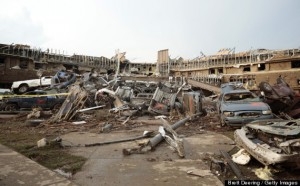 Oklahoma Sen. James Inhofe (R), who maintains that global warming is a hoax created by former Vice President Al Gore and the United Nations, said on Tuesday that it was "hard to explain" why Monday's tornado was "so much worse."
Oklahoma Sen. James Inhofe (R), who maintains that global warming is a hoax created by former Vice President Al Gore and the United Nations, said on Tuesday that it was "hard to explain" why Monday's tornado was "so much worse."
During an interview with John Berman on CNN, Inhofe remarked that the storm had transported a photo 80 miles from Shawnee to his neighborhood in Tulsa.
"So many things happen that are so hard to explain," he told the CNN host. "This thing was huge. This is one of the largest ones that we've had."
Can Obama’s EPA Save Us From TCEQ’s “Clean Air Plans”?
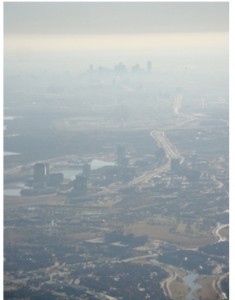 It's only a proposal, but the Obama Administration's plan to cut sulfur in gasoline is aimed primarily at drastically reducing smog-forming Nitrogen Oxide, Volatile Organic compounds and Particulate Matter, the major pollutants that causes DFW to have such bad "ozone seasons." Would it reduce it enough to finally put the region in compliance with the Clean Air Act? Good question.
It's only a proposal, but the Obama Administration's plan to cut sulfur in gasoline is aimed primarily at drastically reducing smog-forming Nitrogen Oxide, Volatile Organic compounds and Particulate Matter, the major pollutants that causes DFW to have such bad "ozone seasons." Would it reduce it enough to finally put the region in compliance with the Clean Air Act? Good question.
Sulfur content in gasoline would drop from the current standard of 30 ppm to 10 ppm by 2017 – one year before the compliance deadline for the tougher 75 parts per billion national ambient air ozone standard. That's not a coincidence. The EPA hopes that this initiative is going to drive urban ozone clean-up throughout the country, even in stubborn dirty air hot spots like DFW, which hasn't been in compliance with a smog standard since it was created over 20 years ago.
Along with new stricter emission standards for cars that have already been implemented, the pollution from cars will be coming down over the next decade to historic-per-vehicle lows. Since forever, the state of Texas and local officials have put almost all the blame for DFW's poor air quality on cars. So does this mean that we might actually have a chance to breathe safe and cleaner air, by say, 2020?
Maybe.
First, there's the question of continued growth. If per-car emissions go down, but you're importing 120,000 more cars every year into North Texas, the decreases in emissions are being canceled out to some degree. In this respect, DFW has been its own worst clean air enemy. By attracting new residents year after year and, for the most part, not creating successful transportation options other than private vehicles, the Metromess dooms itself to more total car pollution.
Then there's the climate. Everyone knows how unbearably hot it can get in DFW during July, August and September. That heat and sunlight is one reason we have a smog problem – it chemically transforms the Nitrogen Oxides (NOx) and Volatile Organic Compounds (VOCs) into ozone. What if it gets hotter, and drier? When the ground can't cool off at night and you start out with high morning temperatures that will only get worse by 5 pm, you know it's going to be a bad air day. The more days like that, the harder it's going to be to have safe and legal air despite the changes in engine design and fuel specs. So climate change could rob us of some of those automobile reductions.
If the last couple of years are any indication, you also have to wonder how much of those vehicle changes will be lost on DFW because we live in the Barnett Shale. 16,000 gas wells that are relatively short-term air polluters are being supplemented with more processing infrastructure like compressors, refineries, and pipelines that are year round polluters. Last year's Houston Advanced Research Consortium study estimated the impact of even a single compressor or flare to be as much as 3-10 ppm within five to ten miles, something it would take thousands of cars to accomplish. Even if those cars aren't there anymore, or their emissions make them less of a clean air threat, you have these decentralized major sources taking up the slack. This is one reason why the state itself told EPA that last year there was more VOC air pollution coming from oil an gas sources in North Texas than all the area's on-road cars and trucks, and a large contributing cause to why air quality has been getting worse in DFW over the last two years.
It's not just the number of these facilities but their physical location as well. The more the gas industry moves eastward, the more of the DFW core urban area is "downwind" of these sources, the more the pollution from these facilities combines with car emissions and other urban sources, and the longer they take to leave the now 10-county "non-attainment area," meaning they linger, exposed to sunlight and heat, and have more opportunity to create high levels of ozone. If you have more flares and compressors within 1 to 3 miles of one of 18 or so state air monitors – you will probably begin to see higher ozone readings as a result of their operation – as you have the last couple of years. Most of these pipelines and processing facilities have come online only since 2006.
And that's just in the North Texas area. There's evidence to suggest that the gas industry's building-out to the southeast – or upwind – of DFW is also affecting our air quality. In the same way that Houston's air pollution is said to make our initial "background" ozone levels higher, so too the 60-100 compressors in Freestone County, about 90 miles southeast of Dallas also feed their under-regulated "Standard Permit" pollution into the DFW urban mix. As does the Haynesville Shale gas play itself, as do the remaining east and central Texas coal plants and so forth. If sources to the south and east continue to increase their emissions, it means DFW starts from further and further behind, so that even if cars get cleaner, they might not get so clean so fast as to compensate for this imbalance.
Then there's the "fire hose" effect of the three Midlothian cement plants sitting so close to one another as to create one large super plume that's usually pointed toward the DFW urban core most of "ozone season." Because of citizen efforts, those cement kilns are substantially cleaner in 2013 than they were as recently as 2008. All but one wet kiln is closed, and that one is due to shut down next year. None are burning hazardous waste. But they're still the largest stationary sources of pollution in North Texas – including emitting copious amounts of NOx and VOCs – and they can still impact monitor readings miles and miles away. It's unclear what impact the burning of newly-permitted "non-hazardous" industrial wastes like car parts and plastics in the Midlothian kilns will have on the formation of smog-forming pollution.
EPA estimates an 80% drop in VOC and NOX pollution from cars as a result of its new low-sulfur fuel rule. That's steep. Remove that amount of pollution from all DFW's cars and trucks, and you'd expect to see a substantial improvement in air quality. That's what you'd expect. But, depending on a lot of other variables the state and federal government may or may not be interested in fixing, it could take more than this proposal to bring DFW into compliance with the new 75 ppb ozone standard that is now the federal definition of safe and legal air.
Timing is Everything: National Fracking Conference Coming to Dallas
Just as the long-running fight over gas drilling in Dallas explodes into a full-fledged City Hall scandal, here comes a national fracking conference to spotlight how the rush to drill can create more problems than it solves.
On Saturday March 2nd, and Sunday March 3rd, DFW residents have a great opportunity to take a break in the fight and see superstars of the citizens movement in person when the "Stop the Frack Attack" conference settles in for a two-day run at the Best Western Plus Dallas Hotel & Conference Center at 8051 Lyndon B Johnson Freeway just east of Coit (map).
You can look at a full schedule of speakers and workshops here, but there are some events that stand out:
SUNDAY, MARCH 3rd
9:00 am – 9:45 am: Morning Plenary: "Health Impacts of Fracking" with Wilma Subra and Nadia Steinzor. Dr. Subra was a 1999 MacArthur "genius" award winner for helping “ordinary citizens understand, cope with and combat environmental issues.” She's one of the leading scientific voices in the grassroots environmental health movement. Nadia Steinzor is the Marcellus Shale organizer for national group Earthworks. You you only see one presentation, you might want to make it this one.
SUNDAY, MARCH 3rd
2:50 pm -3:45 pm : "Connecting Fracking, Climate Change, and Clean Energy" with Dr. Tony Ingraffea. Dr. Ingaffea was the Cornell University scientist who first called BS on the gas industry's claims of being 100% climate friendly. As his presentation points out, the mining and production of gas is not climate friendly at all and makes it a worse choice than coal in some respects.
SUNDAY, MARCH 3rd
4:15 pm – 5:30 pm: Closing Plenary with Deborah Rogers.
Deborah Rogers is a Ft. Worth based economic analyst whose own family property was put under siege by fracking in Cowtown. She just released a new report on the "bubble economics" of the gas industry and will close out the weekend with a presentation on the real economics behind the shale boom.
You don't get to see these three headliners at the same gig very often outside of either coast, so take advantage of them showing up at your front door just as we're about to start another chapter in the Dallas Drilling Scandal, with a City Plan Commission vote scheduled for March 21st. Be prepared.
Besides these great speakers, there are also lots of workshops:
Fracking 101
Community Organizing & Leadership Development
Pipelines, Compressor Stations and Other Infrastructure
Spokesperson training
Nonviolent Direct Action
A full two days. Nationally-known speakers. A bunch of workshops where you'll learn the things you need to know and meet people like yourself. All for only $50 bucks – and that includes lunch both days. Register here now. See you there.
Gas Mining Is Second Largest Source of Greenhouse Gases in US
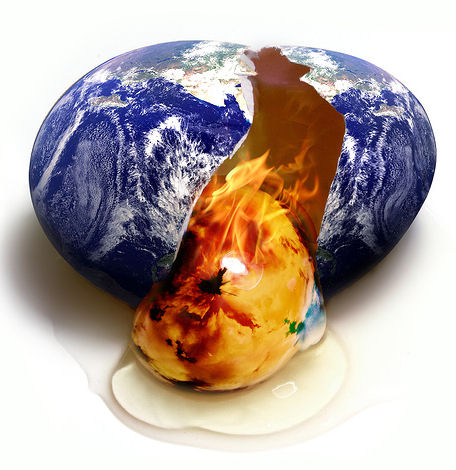 For the first time as part of its annual inventory of pollution that cause global warming from stationary sources, the EPA included oil and natural- gas production. As a result, emissions from drilling, including fracking, and leaks from transmission pipes totaled 225 million metric tons of carbon-dioxide equivalents during 2011, second only to power plants, which emitted about 10 times that amount.
For the first time as part of its annual inventory of pollution that cause global warming from stationary sources, the EPA included oil and natural- gas production. As a result, emissions from drilling, including fracking, and leaks from transmission pipes totaled 225 million metric tons of carbon-dioxide equivalents during 2011, second only to power plants, which emitted about 10 times that amount.
The EPA yesterday released details of emissions from about 8,000 factories, power plants and refineries. Will it surprise you to learn that the state with the greatest overall amount of emissions from power plants and refineries was Texas, with a total of 294 million metric tons. The next-highest state was Pennsylvania, with 129 million metric tons. Florida, Ohio and Indiana rounded out the top five. California ranked seventh, with 71 million metric tons of emissions. Idaho and Vermont had the lowest levels of reported emissions.
Ranked by facility, two coal-fired power facilities owned by Atlanta- based Southern Company topped the list, followed by the Martin Lake plant in East Texas owned by Energy Future Holdings Corp (TXU) of Dallas.
Overall, CO2 from power plants declined over 4% because there was less coal-burning and more gas-burning nationwide. But for areas where gas is mined, like the Barnett Shale in North Texas, GHG pollution is increasing substantially.
Zombie Gas Permits on the March Again
Public (re)-Hearing on the Last Three Dallas Gas Sites.……including the newly-discovered "Rawlings Gas Refinery"
This Thursday
1:00 pm
Dallas City Hall
6th Floor
City Council Chambers
Press Conference followed by City Plan Commission Mtg
This is the "do-over" hearing demanded by the Mayor in order to win approval of these permits – after the first one in December resulted in denial.
Come and defend this victory or they'll steal it away from us.
Dallas Residents at Risk, the alliance of groups that we work with on this issue, will be holding a press conference at 1:00 pm – just like we did before the much-publicized January 10th reconsideration vote – and then heading into the CPC meeting at 1:30. Show up early because we'll be talking about a surprising new development in this fight and bringing you up to date with the latest information.
It's important to demonstrate that opposition to these permits is growing, so if you haven't made it down to City Hall before, Thursday is the day to come.
If you're a regular, then you know how much warm bodies in the audience mean to the moment.
They would have been no news coverage on the 10th without all of us standing up and publicly "shaming" the CPC over its "reconsideration vote" in person. You can't do that by e-mail or petition. We need you there. We need you clapping for the good guys. We need you hissing the bad guys. We need you. There is no substitute.
Looking for material for your testimony? Here are some things we know now about these sites that we didn't when the CPC turned them down in December…..
* Neither the Park Board nor City Council ever voted to allow surface drilling in parks. In fact, city staff assured the City Council in 2008 that would be NO surface drilling in parks. So where did Trinity East get the idea it could have two of its drill sites on city park land (The newly-named Luna Vista Golf Course and near-by gun range)? That's a really good question that nobody at Dallas City Hall has attempted to answer.
* One of the Trinity East sites now contains a large gas refinery and compressor station in addition to a pad site for 20 wells. This facility will become the 10th largest air polluter in Dallas the moment it comes on line, releasing 75-100 tons of air pollution every year only 600 feet away from the City's new Elm Fork Soccer Complex on Walnut Hill.
* Last September, the City of Dallas denied a new permit to a rock crushing facility near the Elm Fork Soccer Complex because its 17 tons of annual air pollution was deemed too threatening for children's health. However, five months later, the city is advocating allowing the operation of a gas refinery and compressor station that is estimated to release some 75-100 tons of air pollution a year. Why is 17 tons of air pollution a health threat but 100 tons is OK? Another great question nobody at Dallas City Hall has answered.
* Trinity East knew when it signed its leases with the City that drilling in parkland and the floodplains was prohibited. So why is the City of Dallas still saying its afraid of a lawsuit by Trinity for backing out of the deal if the permits are denied?
We can win if we keep showing up and asking questions.
Please show up this Thursday.
Cuts in Methane and PM Pollution Can Slow Climate Change
 In an opinion piece in The Daily Climate, Michael MacCraken, the chief scientist for the DC-based Climate Institute advocates an end-run strategy to avoid the political logjam over large CO2 cuts as a way to fight global warming. He suggests concentrating on reducing Methane and Particulate Matter pollution as a way to "appreciably slow the rate of warming over the next several decades." He cites an earlier UN study that concluded:
In an opinion piece in The Daily Climate, Michael MacCraken, the chief scientist for the DC-based Climate Institute advocates an end-run strategy to avoid the political logjam over large CO2 cuts as a way to fight global warming. He suggests concentrating on reducing Methane and Particulate Matter pollution as a way to "appreciably slow the rate of warming over the next several decades." He cites an earlier UN study that concluded:
"…a moderately aggressive international emissions control program focused on the short-lived compounds could roughly halve the projected warming between the present and 2050. While slowing the warming through this approach might seem to also offer additional time for cutting CO2 emissions, this is not the case. Instead, these actions are more appropriately viewed as partially making up for earlier policy delays.
For the United States to do its share, aggressive limits on CO2 emissions must be complemented by aggressive limits of emissions of short-lived species. In particular, the Environmental Protection Agency will need to be more aggressive in cutting short-lived emissions, particularly of methane from the oil and gas industry, and making its voluntary methane and black carbon programs mandatory.
With climate change so far along, the question now is no longer whether impacts can be avoided, but rather how bad they will become. What we do with respect to both mitigation and adaptation will control that outcome. The longer we wait, the worse the impacts and sharper the required energy transition."
While methane gradually breaks down in the atmosphere, forming carbon dioxide, it has 100 times the warming potential of carbon dioxide for the first 20 years it’s exposed to the environment. A study by Cornell University Environmental Biology Professor Robert Howarth found between four and eight percent of the methane produced by a fracking well is leaked into the atmosphere during the well’s lifetime. For all the immediate environmental benefits of natural gas, the methods used for its extraction could create a larger greenhouse footprint than oil or coal over time.
EPA is considering a new national PM pollution standard because of its public health impacts and should use the opportunity to win deeper cuts that offer so many "co-benefits." Every reduction in soot is now doubly important. Cars, cement kilns, coal plants, and just about any industrial boiler or furnace spews out PM. They all need to be targeted as part of a larger effort to bring this kind of pollution under better control.
This impact on global warming is also one more reason why Dallas residents should be demanding that the city incorporate some kind of "off-sets" policy regarding new oil and gas air pollution as part of a new City drilling ordinance. Not only can it hep reduce smog and some of the toxins released by the drilling and processing of natural gas; it can also provide some needed help for climate change at a time when the city is just squeaking by its own greenhouse gas reduction goals.
What Kevin Said
 Kevin Drum talks about the politics of Climate Change, and why it never came up in last night's presidential debate.
Kevin Drum talks about the politics of Climate Change, and why it never came up in last night's presidential debate.
As His Replacement is Announced, Dr. Al Speaks Out in Austin
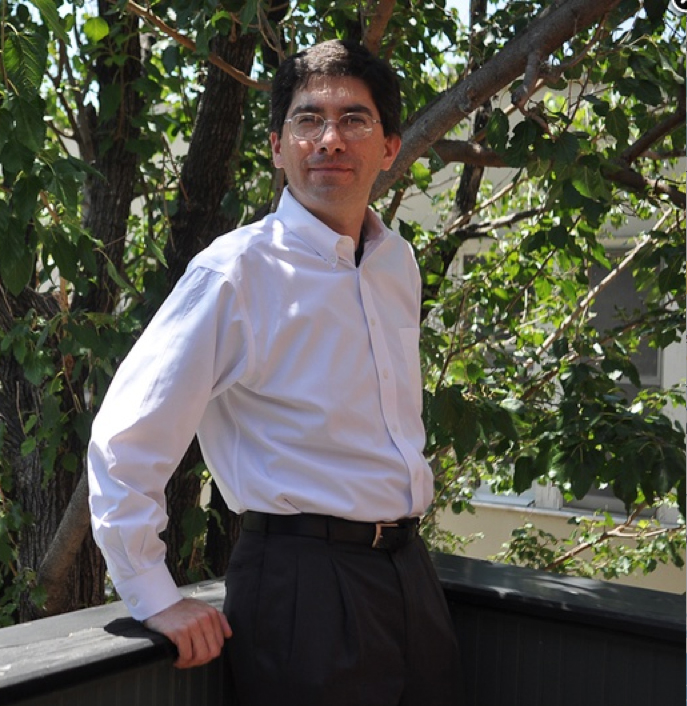 Maybe the EPA knew their former Region 6 Administrator Al Armendariz would be doing a one-on-one interview with the New-York Times-connected Texas Tribune as part of its annual festival on Saturday, or maybe it's just coincidence that the Agency named Armendariz's replacement very late Friday evening.
Maybe the EPA knew their former Region 6 Administrator Al Armendariz would be doing a one-on-one interview with the New-York Times-connected Texas Tribune as part of its annual festival on Saturday, or maybe it's just coincidence that the Agency named Armendariz's replacement very late Friday evening.
Whatever behind-the-scenes coordination did or did not take place, the appointment of New Mexico's Ron Curry as the new Region 6 chief gave Armendariz a slightly more removed historical perspective, and maybe willingness to talk, than he might have had otherwise.
Here's a live blogging of the interview that the Tribune's Evan Grant did with Armendariz from the Tribune festival itself in the middle of a forum on energy and the environment (11 am to 12 noon). Elizabeth Souder's recap for the Dallas Morning News is behind the paper's paywall, but here's a peak:
Former EPA regional admin Armendariz said anti-EPA court cases delay the inevitable
AUSTIN — Recent court cases striking down Environmental Protection Agency rules are just delaying the inevitable, said former regional EPA administrator Al Armendariz, who quit after a video surfaced showing him comparing his approach to Roman crucifixion.
Armendariz, who resigned as Region 6 administrator earlier this year and now works on an anti-coal campaign with the Sierra Club, said the agency will just re-write and re-apply the cross-state air pollution rule on coal plant emissions and its rejection of Texas’ flexible air permit rules. Some conservative Texas politicians regarded court decisions knocking down those rules as major victories.
Further, Armendariz said, the court decisions don’t show that the EPA was wrong. No, he said, the decisions show that the courts are wrong.
“They point out to me the importance of getting the President to appoint justices on the federal judiciary that will follow the law,” Armendariz said at a conference held by the Texas Tribune.
“I’m confident those actions, as written, were written completely in compliance with the law, and when those rules are revised that the agency is going to win any future litigation,” he said.
Armendariz defended his former employer and praised his successor at the Saturday appearance. He said the EPA and the White House have been working to implement the Clean Air Act and Clean Water Act, laws passed by Congress decades ago but never fully applied.
He criticized Texas environmental regulators who enable polluters, and called on energy regulators and lawmakers to create a plan to meet the state’s electricity needs with renewables.
Armendariz resigned in April after criticism over his comments in a video. In the video, he makes an analogy about his philosophy of enforcement. He said: “It was kind of like how the Romans used to conquer little villages in the Mediterranean. They’d go into a little Turkish town somewhere, they’d find the first five guys they saw and they’d crucify them. And then, you know, that town was really easy to manage for the next few years.
“And so you make examples out of people who are in this case not compliant with the law. Find people who are not compliant with the law, and you hit them as hard as you can and you make examples out of them, and there is a deterrent effect there.”
Arendariz on Saturday said he had apologized because his analogy offended people, which wasn’t his intent. But he didn’t back off the idea of deterring illegal polluting by punishing lawbreakers.
“I do stand behind the concept of my comments,” he said. “When you find someone who is violating the law, you do, within the boundaries of the law, vigorously prosecute.”
He said doing so ensures that illegal polluters don’t gain an unfair advantage over companies following the rules.
Texas Tribune chief executive Evan Smith said some people regarded the video as confirmation that Armendariz had it in for the energy industry.
Armendariz said such criticism was unfair, since in the video, he says his enforcement philosophy is for companies breaking the law.
Nor did he act alone by going after polluters. He said EPA administrator Lisa Jackson and her Washington staff had been “very involved with what we were doing in Texas.”
But he said leadership at the Texas Commission on Environmental Quality, the state regulatory arm of the EPA, is lax.
“There are some fantastic staff at TCEQ, and I think they’ve got poor leadership. I think the Governor’s appointees at that commission are preventing the staff from doing its job,” he said.
TCEQ chairman Bryan Shaw has criticized the EPA’s recent rules that would tighten regulations on coal plant pollution and greenhouse gas emissions.
And he praised his successor at the EPA, Ron Curry, the first non-Texan to lead the region that covers Texas, New Mexico, Oklahoma, Arkansas and Louisiana. The president announced the appointment last week.
“Ron is pragmatic, he’s very smart. He understands the need for conservation and the need for economic development,” Armendariz said.
Armendariz also said people who don’t believe in climate change are doomed to become irrelevant, just as doctors who don’t believe smoking causes cancer.
“I think the science of climate change is really irrefutable and those folks who are continuing to deny that climate change is a problem are really on the wrong side of history,” he said.
Now, Armendariz leads the Sierra Club’s anti-coal campaign, which aims to keep coal in the ground. He said so-called clean coal plants, which pollute less than traditional coal plants and capture greenhouse gases, are too expensive to justify coal mining.
“Clean coal I think is technically feasible, but I think it’s completely unnecessary,” he said.
He conceded the country will continue to use coal for the next decade. But he said coal isn’t necessary to keep the lights on.
The Electric Reliability Council of Texas has said the state is in danger of outages in the next few years because power plant developers haven’t build enough new generation to keep up with growing demand. The prospect of shutting down coal plants because of stiffer environmental regulations has left some regulators nervous about blackouts.
Armendariz said the reliability problem is due to a “complete lack of leadership and forethought.” He called on regulators and lawmakers to solve the problem with long-term planning and a vision centered on renewables, such as wind and solar.

